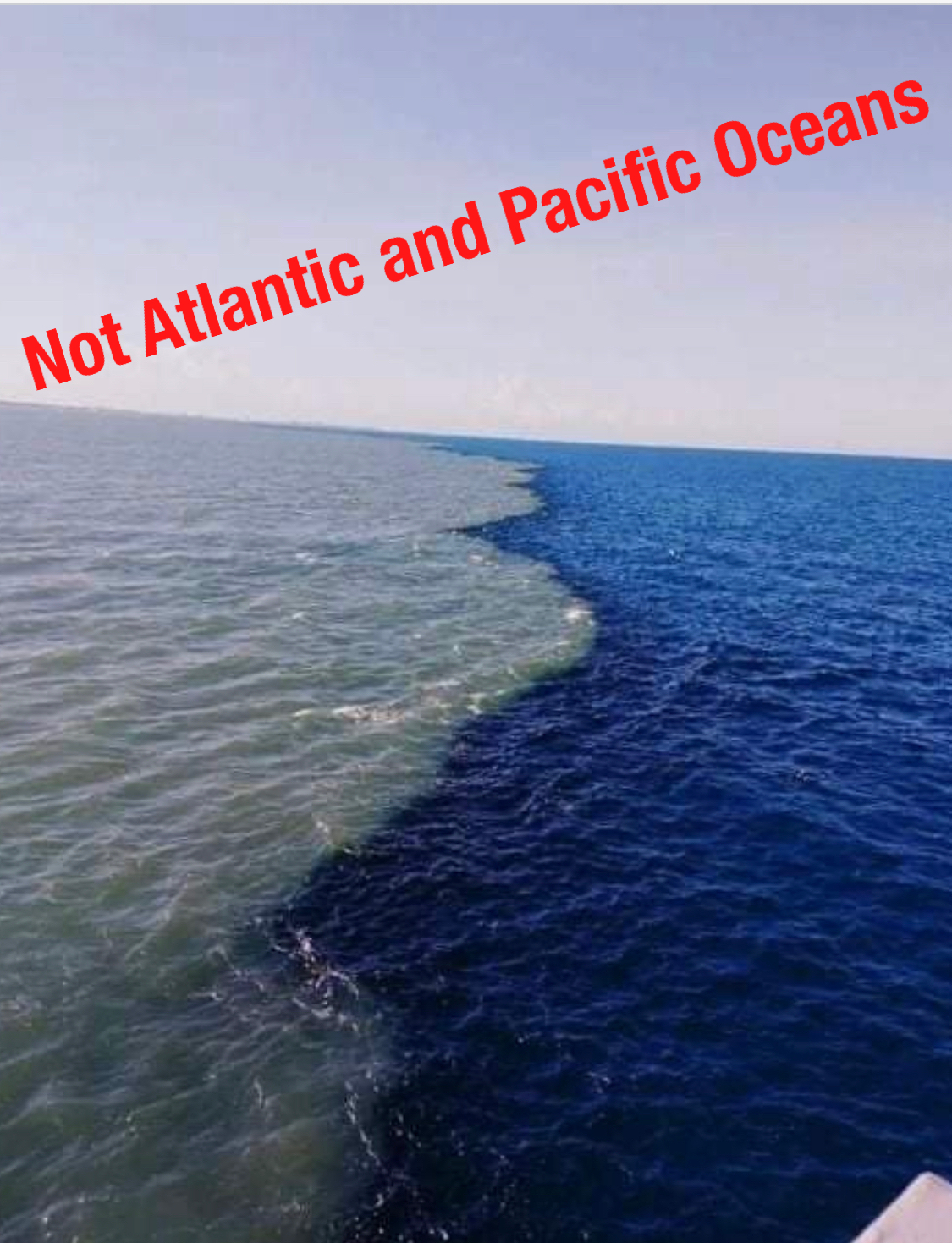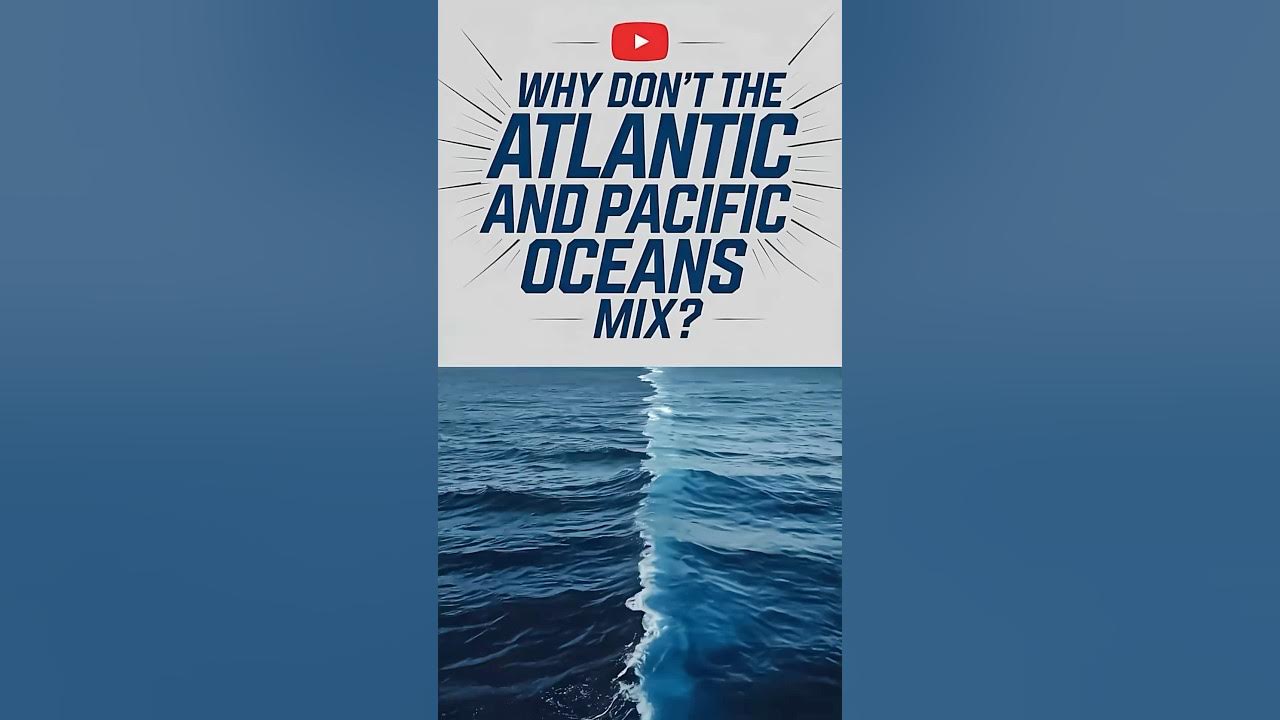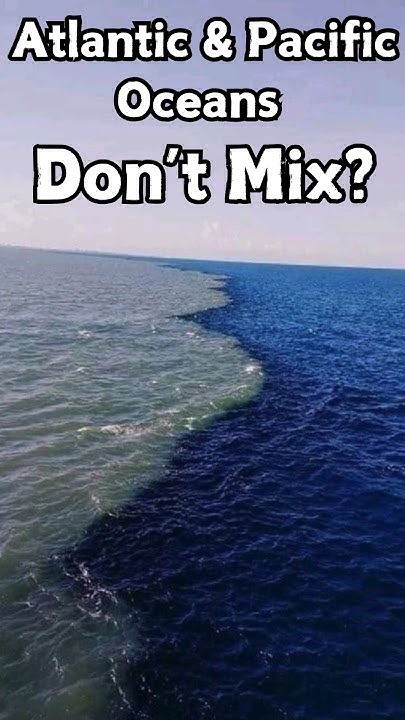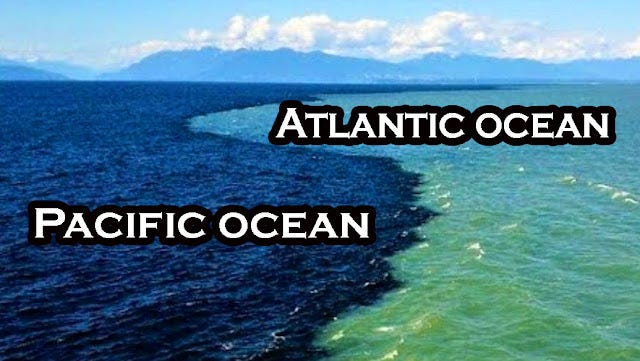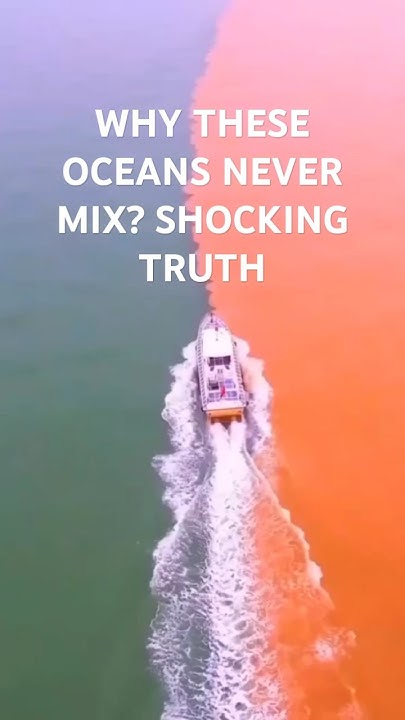Why Dont The Atlantic Ocean And Pacific Ocean Mix

Ever seen a cartoon where two stubborn characters just refuse to play nice? Well, imagine the Atlantic and Pacific Oceans are those characters, only way bigger and a whole lot wetter! It's a common misconception that they completely refuse to mix, but the reality is more like a very polite, socially awkward dance.
Think of it like this: you've got a glass of sweet tea and a glass of lemonade. If you pour them together, you'll get a delightful mix. But at the spot where they meet there is a clear line that separates them. That's kind of what's going on between the Atlantic and Pacific!
Why the Hesitation? It's Not Just Shyness!
So, what's causing this oceanic standoff? It's not like they're arguing over who gets the better parking spot near the Panama Canal. It's more about a few key differences that make them less likely to blend perfectly.
Density Differences: The Weighty Issue
One major factor is density. Imagine you're trying to mix oil and water. The oil, being less dense, floats right on top. The same principle applies to our oceanic pals, though to a much lesser degree. The Atlantic tends to be saltier and therefore denser than the Pacific. This difference in saltiness means the Atlantic water is heavier than the Pacific and therefore less likely to mix.
Think of it like trying to mix maple syrup and water; the syrup, being thicker and denser, will take some serious stirring to fully incorporate!
Temperature Troubles: A Chilling Effect
Temperature also plays a role in this aquatic awkwardness. You may have heard that warm water rises while cold water sinks. This is called thermohaline circulation, but we can just call it the ocean's conveyor belt!. The Atlantic, on average, tends to be colder than the Pacific, especially near the Arctic. These temperature differences further contribute to density variations and make mixing a bit more challenging.
Imagine trying to mix hot chocolate and iced coffee - you might end up with a lukewarm, slightly confusing beverage!
Salinity Shenanigans: A Pinch of Salt (or a Lot!)
As we talked about before, salinity is another crucial factor. The Atlantic is generally saltier than the Pacific. This is partly due to higher evaporation rates in the Atlantic and the fact that several large rivers drain into the Pacific, bringing in freshwater.
If you want to see it by yourself: try mixing a very salty glass of water with fresh water. You'll see how they resist blending completely right away!
The Panama Canal: A Controlled Introduction
Now, you might be thinking, "But wait! What about the Panama Canal? Doesn't that connect the two oceans?" Yes, it does! However, the Panama Canal operates using a series of locks.
These locks carefully control the flow of water between the oceans, preventing a rapid and dramatic mixing. It is like a very slow and cautious handshake between two old friends!
They *Do* Mix, Just Not Perfectly!
Okay, so they don't mix like two peas in a pod, but they don't live in completely separate universes either! There is some mixing that occurs, especially at the surface and in certain regions. Currents and eddies create swirling patterns that help to blend the waters, albeit gradually.
The ocean is a giant, dynamic system, and while the Atlantic and Pacific might have their differences, they're ultimately part of the same interconnected whole.
So, next time you're at the beach, remember the slightly awkward, but ultimately harmonious, relationship between the Atlantic and Pacific. It's a reminder that even things with different personalities can coexist in a vast and wonderful world!




